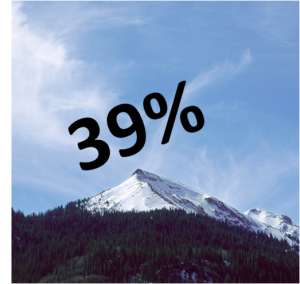My introduction to the issue of risk in business decision making came rather abruptly and rudely during what I thought was going to be another routine quarterly business review with the executive committee. My particular agenda item was to present the business case for a “lite” version of one of our products that could serve as a low-cost entry-level option for those customers with either smaller requirements or tighter budgets. As director of finance for the product division,I had at my disposal a rather sophisticated financial spreadsheet model comprised of six separate data entry and calculation tabs for such components as income statement, balance sheet, cash movements, capital expenditures and staffing requirements, all leading up to a summary-level multi-year financial analysis complete with calculated fields for payback, NPV and IRR. We ran all of our marketing and development business cases through this model, and to say I was proud of the rigor and the outcome would about cover it.
As was typical for such a meeting, in attendance were the CEO, CFO, general counsel, and the VP’s and GM’s of the handful of divisions that operated under the CEO's umbrella, including of course the VP/GM of the product division, Tom, the man I reported to, and the one friendly face I counted on in these situations. Up went the summary slide, not too much detail, just enough to convey the discipline that went into the analysis, with a 39% IRR figure highlighted in bold, underlined and surrounded by an even bolder box outline. Easily exceeding the company's 20% after-tax hurdle rate, I was not expecting very much conversation regarding this decision at all, but I had not counted on Tom’s new-found skepticism that day.
“What is this?”, he boomed. “Why should I believe this number?” “What makes this number any better than all the others that have come through this room before and failed miserably?” “I’m not approving another product investment until somebody can tell me whether or not I should trust this number!”
Whew. Not sure where that came from. Whether it was due to a bad hair day or a bad piece of meat or the phase of the moon I’ll never know, but nonetheless, Tom was right. Year after year the executive committee had approved similar investments, all presented with exactly the same financial detail calculated to three significant digits, and all had come up short in delivery, revenue, costs, margins and/or market share. To tell the truth (after I’d caught my breath), I could see how this 39% looked just like all the other investment BS that had passed before.
 What Tom was asking, of course, was the “How Certain” question. He was no longer going to be satisfied with just the numbers, he wanted to be able to evaluate the risk associated with them. Trust was what he was looking for, trust that comes from confidence, or confidence intervals.
What Tom was asking, of course, was the “How Certain” question. He was no longer going to be satisfied with just the numbers, he wanted to be able to evaluate the risk associated with them. Trust was what he was looking for, trust that comes from confidence, or confidence intervals.
Picture that 39% sitting atop a hill. Visually, what Tom wanted to understand in all its aspects, was the shape of that hill. Was it a gently sloping hill in a pasture setting, where high winds, strong storms or even a slight earth trembler would only bring it down to 34%, or maybe 27%, or at worst case, 22%. Or, was it sitting atop a K2-like pinnacle, where the slightest action could cause it to crash down the mountain slope, well past the 20% hurdle rate, down into single digits or even into negative territory.
I knew what he wanted, of course, but couldn’t answer him at the time. The answer, however, was not the primary issue. The QUESTION was now paramount, and would drive my business management approach for the remainder of my career. I had read “Competing on Value” and knew that if I could answer the “How Certain” question I could revolutionize the way business decisions were made within the company.
Next time: A “How Certain” approach to business decisions.

3 Comments
Pingback: Missed opportunities: Risk, reward, and mountains of cash - Value Alley
Pingback: Agile risk management – What might that look like? - Value Alley
Pingback: Agile strategy, revisited - Value Alley